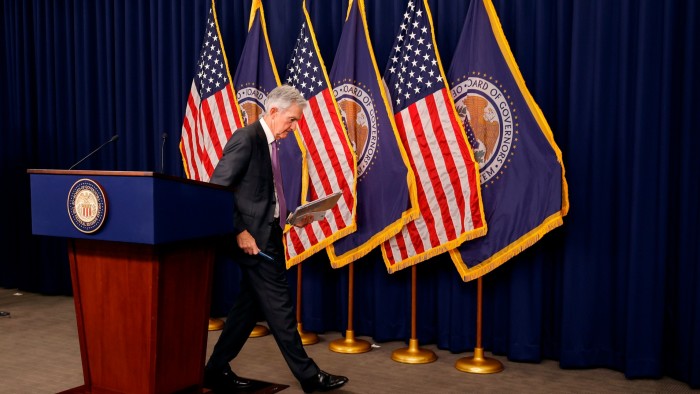The Fed should resist messing with success

Roula Khalaf, Editor of the FT, selects her favourite stories in this weekly newsletter.
The writer is president and chief investment strategist at Yardeni Research
Jay Powell has made it clear that he and his colleagues at the Federal Reserve are “not far” from getting enough confidence to start lowering interest rates. At a press conference last week after the central bank’s latest monetary policy meeting, the Fed chair reiterated that “if the economy evolves broadly as expected, it will likely be appropriate to begin dialling back policy restraint at some point this year”.
Powell’s assessment was endorsed by members of the policy-setting Federal Open Market Committee. In the latest summary of their economic projections, the median expectation of members was for a decline in the federal funds rate this year from the current range of 5.25 to 5.50 per cent now, down to 4.60 per cent by the end of the year.
In his press conference, Powell acknowledged that the economy is performing well and the labour market remains tight. In addition, inflation has moderated significantly since last summer. This raises an important question: if the economy is doing well with the current level of interest rates, why lower them?
Powell and his colleagues seem to share the view that if inflation continues to moderate, they will have to lower the federal funds rate so it doesn’t become too restrictive and cause a recession. If inflation falls to 2.0 per cent and the federal funds rate remains at 5.25 per cent, the real rate would be 3.25 per cent. History suggests that several previous recessions happened after the real federal funds rate rose above 3.0 per cent.
Yet, the concept of the real interest rate is a theoretical one rather than a practical empirical one for managing monetary policy. It is hard to believe that subtracting the yearly per cent change in the consumer price index inflation rate from the benchmark overnight banking rate is a variable that matters to anyone (other than economists). Is anyone’s economic and financial behaviour really affected by the real federal funds rate?
Granted, the federal funds rate has an influence on nominal bond yields, which are likely to have more of an impact on behaviour. But the basic premise of focusing on the real federal funds rate is that monetary policy should aim to keep it close to some sort of “neutral” rate, which is sometimes also called the “natural” rate as if it is determined by the economic laws of nature. At this nirvana level, all is right with the US economy because it is growing while inflation remains moderate.
According to the Fed’s latest summary of economic projections, the “longer run” nominal federal funds rate should be down to 2.6 per cent (in the long run, of course) because the FOMC will succeed in lowering the longer-run inflation rate to 2.0 per cent, the committee’s official inflation target. Eureka! That must mean that 0.6 per cent is the real federal funds rate that achieves natural economic harmony, promoting economic growth and solid employment gains, while inflation hovers around 2.0 per cent.
History actually shows, though, that recessions aren’t caused by excessively high real interest rates. Most of the ones we’ve experienced since the 1960s were caused by the tightening of monetary policy until it triggers a financial crisis that is quickly followed by a credit crunch, which causes a recession. It is financial crises that have caused the Fed to lower the nominal federal funds rate in the past, not a perception that the borrowing benchmark was too high and about to cause a recession.
During the 2008 financial crisis, the Fed learnt how to rapidly establish emergency liquidity facilities. That’s what it did in response to the pandemic lockdowns; as a result, the Covid recession lasted only two months. The Fed did it again last year, when a banking crisis developed during March; that time, there was no recession at all.
If the Fed can continue to manage financial crises and avert economy-wide credit crunches, then the risk of a recession is reduced during monetary tightening cycles. That’s one of the main reasons the economy continued to grow over the past two years in the face of a significant tightening of monetary policy.
And what about Milton Friedman’s claim that monetary policy operates with a long and variable lag? If so, then the central bank should start lowering the federal funds rate soon to offset the delayed impact of the past two years of monetary tightening. But if financial crises are the main risk for recessions, then instead of Friedman’s ambiguous hypothesis, the Fed might want to focus more on credit cycles in deciding rate levels. Why risk inflating a speculative bubble in asset prices that are already soaring to record highs for stocks, gold, bitcoin and houses? Why mess with success?
Comments